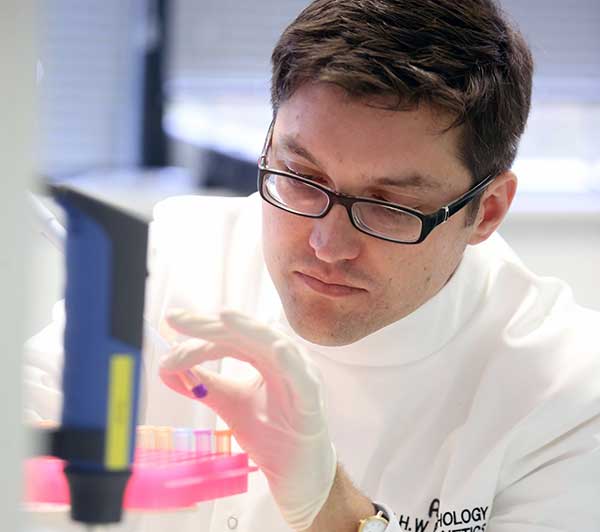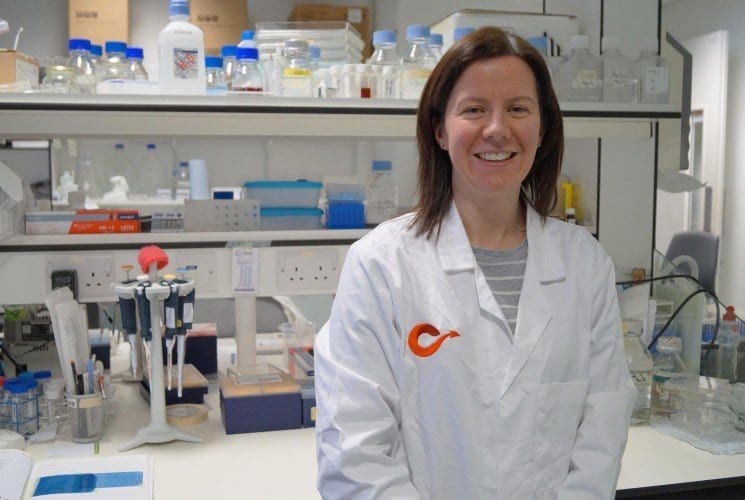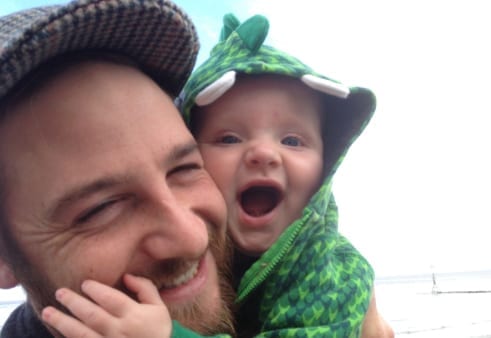TSA-funded research
The Tuberous Sclerosis Association’s heritage and ongoing work in funding research into Tuberous Sclerosis Complex
The Tuberous Sclerosis Association (TSA) is proud of our long-standing history of being a world-leader in funding important research into causes, diagnosis, management and treatment for Tuberous Sclerosis Complex (TSC).
We fund a broad range of different pieces of research, all focused on improving the lives of people affected by TSC.
Here, we highlight just some of the research that the TSA has been involved in as part of the pursuit of improving the lives of people affected by TSC.
How TSA-funded research is possible
The TSA is able to help fund important research into the diagnosis, treatment and management of TSC-related issues only as a result of receiving donations.
Without the generosity of fundraisers and charitable donors, the dedication and patience of TSC researchers and clinicians in pursuing TSC breakthroughs would not be possible from TSA funds.
Our TSC research heritage
The following is a small example of the many pieces of vital research that the TSA has been a part of, helping to improve our understanding of TSC and how to better support people living with the condition.
In 1977, TSA joint-founder Ann Hunt MBE wrote a series of scientific papers on TSC-Association Neuropsychiatric Disorders (TAND), based on her survey of the TSC community. Read more about TAND here.
Ann’s pioneering papers on TAND were a game-changer in establishing insomnia, behavioural problems and autism spectrum disorder (ASD) as essential and important factors of the TSC spectrum. The papers were used by researchers across the world for decades after their initial release and continue to be referenced in many scientific textbooks.
A huge international effort – which featured UK researchers from Cardiff, Cambridge and Bath working alongside international counterparts in the USA, Netherlands and Poland – led to the breakthrough identification of TSC2 in 1997 and TSC1 in 1993.
The announcement caused shockwaves in the TSC community and beyond, with BBC News reporting on the identification of TSC1 in 1997 and interviewing the late TSA-funded researcher Professor Sue Povey.
Research into the TSC1 and TSC2 gene has continued in recent years, with vital advancements being made by TSA-funded researchers Professor Julian Sampson (Cardiff University) and Dr Rosemary Ekong (University College London).
In 2005, the TSA part-funded TESSTAL, one of the first trials that demonstrating that sirolimus – an mTOR inhibitor – could treat renal angiomyolipomas (or ‘AMLs’, growths on the kidneys associated with TSC) and Lymphangioleiomyomatosis (or ‘LAM’, a lung condition associated with TSC). The TSA’s work in funding sirolimus research continued in 2012 with part-funding of the TRON study, which looked at the effects of the drug on memory and learning.
TSA-funded research taking place right now and in the near future
The TSA’s position as a world-leader in funding breakthrough TSC research continues to the present day, with the following pieces of research happening either right now or in the very near future.
The EDiTs study team, lead by Professor Patrick Bolton and Dr Charlotte Tye’s (King’s College London), have developed a home-based assessment to better monitor and understand social and non-social attention in toddlers with TSC.
This early intervention solutions has already indicated a dramatic improvement in social behaviour linked to autism spectrum disorder. The EDiTs study is ongoing and aims to pave the way for the design of more early interventions to improve the long-term quality of life for patients with TSC.
Lead by Professor Petrus de Vries (University of Cape Town) and Professor Anna Jansen (UZ Brussel – Vrije Universiteit Brussel) the TANDem Project brings together a worldwide team of families affected by TSC, researchers and clinicians to provide scientific evidence for greater TAND intervention and treatment.
The two-part project will first focus on the development of a self-report TAND checklist and identification smartphone app, to measure how people are affected by TAND. The second part of the study will investigate the best ways to treat TAND, including agreement on suitable clinical guidelines for TAND.
Following this work in identifying and treating TAND, the TANDem Project will help to prepare a global team of TAND researchers to raise awareness and lead future research into TAND.
The TANDem project is co-funded by the King Baudouin Foundation.
One of the current priorities in TSC research is to develop a model of the human circulatory system using human cells, so that scientists can study LAM in more detail. LAM (or ‘lymphangioleiomyomatosis’) is a condition affecting around 35-40% of females who live with TSC. LAM is caused by TSC cells moving from different parts of the body to the lungs, causing cysts.
Dr Elaine Dunlop and her team at Cardiff University will carry out a new project with the aim being to create a LAM model. If the research is successful, it will give scientists a better understanding of why TSC LAM happens and why some cells invade the lungs whilst others do not.
The TSC-LAM study is co-funded by the US Department of Defence.
Dr Sam Amin and Dr Ingram Wright at the University of Bristol are aiming to develop an understanding of appropriate and effective ways for children and young people with TSC to access available mental health services and psychological support.
This research hopes to demonstrate a clear benefit of providing therapies to children and young people with TSC who are experiencing psychological or emotional distress.
At the renowned Sabatini Lab, Dr Kacper Rogala and his team are focusing on research into the structural biology of TSC and how this can help to identify and create new and more specific drugs to treat TSC.
It is hoped that the research can go towards developing a treatment that would provide all the benefits of rapamycin, but without its unwanted long-term side-effects.
Professor Andrew Tee and PhD student Jesse Champion (Cardiff University Hospital) are investigating the limits of everolimus and rapamycin, specifically, why these treatments are not 100% effective and why not all TSC tumours respond to treatment with them.
The team are currently examining how TSC tumour cells in the lab respond to a series of new drugs in clinical development and will compare the effects with existing treatments. It is hoped that this research will help to find better and more effective treatments for TSC patients.
We know that TSC cysts surround and hijack healthy cells, in turn helping the cysts grow. Dr Elaine Dunlop and PhD student Muireann Ni Bhaoighill (Cardiff University Hospital) plan to collaborate with world-leading TSC experts to help better understand exactly how TSC cysts communicate with healthy cells.
It is hoped that this research could help to reveal new ways of preventing TSC cysts from growing, thereby helping to develop better strategies for treating and managing TSC. This research has helped Elaine secure a lectureship position at Cardiff University, which has furthered her career in TSC.
Make a one off or regular donation
£10 Can allow us to send a welcome pack to a family who has just received a life-changing TSC diagnosis, ensuring that they do not go through this time alone.
£25 Can help us develop materials that are included in our support services, flagship events or campaigns.
£50 Can provide laboratory equipment for a day’s research into the causes, symptoms, management or treatment of TSC.
To provide help for today and a cure for tomorrow







